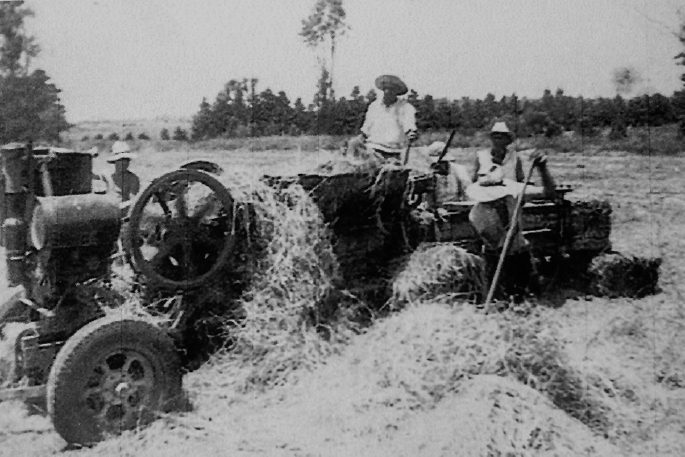Haymaking was always an essential part of farming. A weather-dependent and often-thwarted task, carried out by those with a passion for machinery and a love of the land.
Nowadays other products such as silage and haylage have overtaken hay in popularity, but it is still an important part of a rural contractor’s year.
Jim Martin, 76, a retired rural contractor, and Tom Smith, 84, a retired dairy farmer and school bus driver, were childhood friends in Manawaru in the 1940s, and vividly remember the haymaking methods of their youth.
“Back then you were guaranteed a good six weeks of hot weather in January and February. Farmers grouped together, pooling machinery and manpower, and worked through all the farms in the group,” says Jim.
His family used horses right up until the 1950s, while Tom’s family had a tractor from the early-1940s. The boys loved haymaking as everyone mucked in and they all got a day off school.
“You have to remember back then that although horses pulled the mowers, tedders and rakes, there was still a lot more manpower involved,” says Tom.
By the time it was cut, the grass was already quite dried out, and sometimes as high as a tractor’s wheel, often yielding 100 bales an acre. Up to two hectares could be cut on a good day.
Stacking
If good weather held, the whole haymaking process was sometimes completed in one day, with milking happening between each stage. At other times it took three or four days.
“The mowers cut a five foot width and the tedders could turn two five-foot rows after mowing.
“The rakes would put two rows back into one, ready for either stacking or baling,” says Jim.
Before balers were used, the hay had to be swept into large piles for stacking, an art that had to be taken seriously. Both Tom and Jim grin at the memory of many a hay stack ending up in flames.
“The stack had to be built right, and the hay had to be dry, as wet hay will combust,” says Tom.
A stacker was used to pile the hay up, and the stack was normally built in the corner of a paddock so it was fenced on two sides. If built right, they lasted well, and only the very outside got wet in rain.
“Early mechanical balers still needed around four men to operate them to produce the wire-bound bales, and there was a lot of stopping and starting,” says Jim.
Changing weather
Times have most certainly changed during the 70 years on from the memories of Jim and Tom. Cameron Barrie, 29, works as a rural contractor for Slattery Contractors in Matamata.
Brought up on a dairy farm, this young man served two tours in the Royal New Zealand Infantry Regiment before returning to the land, this time fulfilling his passion for machinery.
“Although hay is still popular, it’s getting increasingly harder to make due to changing weather patterns not giving dry, hot breaks when the hay is ready,” says Cameron.
The process of mowing, tedding, raking and baling is still the same, but requires much less manpower and production is much quicker.
“I sit in an air-conditioned tractor cab, listening to Spotify, and can mow 8-10ha an hour, for 14 hours a day.”
When Cameron has mown one farm, he moves to the next – and his colleagues follow behind him with the other machines. Weather permitting, the stages are still carried out during a period of two or three days, but on a larger scale compared to the past.
Modern mowers can cut a 9m width of grass in a pass, tedders have a 13m span, and rakes span 7-8m.
Bale types
Bales have changed, with smaller landowners wanting conventional bales, but large rounds suiting dairy farmers with silage bale feeders. Large squares and multi-bales offer convenience for breaking off smaller pieces for equine establishments.
Despite all that, haymaking is still an art requiring human instinct, says Cameron. “An experienced haymaker knows when to progress to the next stage.
“It’s all about the colour, the look, the smell, and the feel. We know when it’s ready.”
Even though there are bales nowadays, they still need to be stacked, and especially with conventional bales, there is an art to keep the stack from leaning over.
The camaraderie of yesteryear is still alive and well, with groups, clubs and charities wishing to fundraise often taking on the job of collecting bales from paddocks, and stacking them in the barns.
Most farms nowadays use rural contractors for their haymaking as it is more cost-effective.
For the men like Jim, Tom and Cameron, they all have one thing in common – a passion for the machinery available in their era, and an instinct for the art of haymaking.



0 Comments
Leave a Comment